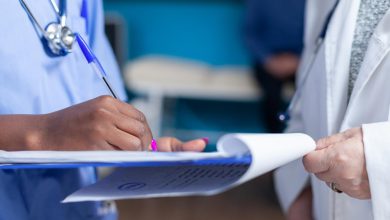What Exactly Is Acupuncture? And what are the Advantages?

Acupuncture is becoming one of the most common Traditional Chinese Medicine (TCM) techniques in the West. TCM is a complementary medicine treatment that started in ancient China over 2,500 years ago and has subsequently evolved. TCM practitioners utilize holistic treatments such as acupuncture, herbal medications, tai chi, qi gong, massage therapy, and different “mind and body activities” to treat a broad range of ailments, pain, and stress-related symptoms.
Acupuncture and other TCM procedures have been more popular in the United States and other Western nations during the last few decades. According to a comprehensive study on alternative health techniques conducted by the National Institute of Health in 2007, at least 3.1 million persons tried acupuncture in the United States alone 2007. According to the poll, the frequency of visits to acupuncturists increased between 1997 and 2007.
What Exactly Is Acupuncture?
Acupuncture is a holistic healing therapy derived from Traditional Chinese Medicine traditions that involve skilled practitioners putting small needles into the skin to stimulate particular places on the body. The most common inquiry is, “Does acupuncture hurt?” Surprisingly, despite the use of needles in acupuncture, treatments are generally painless. Indeed, one of the most common applications of acupuncture is to alleviate chronic pain throughout the body naturally, without the use of drugs that might bring unpleasant side effects.
The majority of research on ear acupuncture to yet have focused on whether it can safely alleviate pain.
What Is the Process of Acupuncture?
acupuncture treatments are found as a number of techniques rather than one specific method for pain or pain treatment. It is the stimulation of specific points on the body using a variety of modalities, most often needles. Acupuncture, which employs tiny, solid metal needles to gently penetrate the skin, has received the greatest attention in clinical and scientific research settings.
Acupuncture is often performed by hand, with a skilled practitioner inserting needles extremely shallowly into the skin at specified places on the body. Typically, 10 to 20 tiny needles are used at once. The needles are tiny enough to fit within a standard-sized needle used to draw blood, making the procedure very pleasant for most individuals.
Acupuncture points, also known as “acupoints,” are precise areas on the body where acupuncture treatments are focus. Acupuncture is defined by TCM as a method for “balancing the flow of energy or life force,” and this energy may be obtained by stimulating tiny specialized channels in the body.
TCM practitioners believe that there is a flow of energy known as “qi” or “chi” that runs through the body’s “meridians.” Chi is regarded to be the difference between the sick and the healthy, and when it is out of balance, disease, pain, poor sleep, and exhaustion may all arise.
- There are 14 basic energy-channel meridians on the body, with hundreds of acupuncture points along each meridian.
- There are 360 sites on the hands, arms, feet, head, back, and above the main organs. The concept is that by gently putting needles into certain places on the body, the chi flow can stimulate and the patient’s energy rebalance.
- Acupuncture points are often found where nerves enter a muscle, in the middle of a muscle, or where a muscle meets the bone.
The following are some of the main acupuncture meridians:
- Meridian of the Lung
- Meridian of the Large Intestine
- Meridian of the Stomach
- Meridian of the Spleen
- Meridian of the Heart
- Meridian of the Small Intestine
- Bladder Urinary Meridian
- Meridian of the Kidney
- Meridian of the Liver
Acupuncture Applications
Acupuncture is now can use to treat ailments such as:
- spasms and discomfort in the muscles
- chronic back pain and pain headaches, including migraine frequency and severity reduction
- allergens neck pain osteoarthritis knee pain
- digestive issues
- depression, mood
The US Department of Health and Human Services says,
… Encouraging data have emerged demonstrating acupuncture’s effectiveness in adult postoperative and chemotherapy nausea and vomiting, as well as after tooth pain. Other conditions in which acupuncture may be effective as an adjuvant therapy include addiction, stroke rehabilitation, headache, menstrual cramps, tennis elbow, fibromyalgia, myofascial pain, osteoarthritis, low back pain, carpal tunnel syndrome, and asthma.
7 Advantages of Acupuncture
1. Aids in the relief of headaches and migraines
After reviewing 11 trials involving 2,137 acupuncture patients, researchers from the University of Munich concluded in 2009 that acupuncture “may be a beneficial non-pharmacological intervention in patients with recurrent chronic tension-type headaches.”
The study examined various clinical studies that compared the effectiveness of acupuncture sessions to “sham” (placebo-type acupuncture) sessions and got no treatment at all for migraine headache pain alleviation. Both the groups with randomly put needles and the groups with carefully positioned needles showed a decrease in headache symptoms. The control group had no change.
However, in the follow-up survey, the group that had the genuine acupuncture treatment continued to experience a reduction in both the number of headache days and the severity of the headache pain.
2. Relieves chronic pain, such as back, neck, knee, or arthritis pain
In a 2006 study conducted by the University Hospital of Berlin, acupuncture was shown to be more effective than non -acupuncture treatments for relieving chronic pain. There was a significant difference in pain reported between the groups of patients who received acupuncture over eight weeks and those who did not receive treatment in individuals who still had low back pain.
A 2012 research conducted by the Memorial Sloan-Kettering Department of Epidemiology and Biostatistics sought to investigate the efficacy of acupuncture on four chronic pain conditions: back and neck pain, arthritis, chronic headache, and shoulder pain.
The researcher looks at clinical trials involving over 17,000 patients and discovered that those who had acupuncture had less pain than people who got a placebo for back and neck muscle aches and discomfort, osteoarthritis, and chronic headaches. The study concluded that acupuncture is beneficial for chronic pain therapy and is “more than merely a placebo effect, therefore it’s a viable referral choice for clinicians.”
3. Aids Insomnia Treatment
In 2009, the Beijing University of Chinese Medicine published a major meta-analysis that found acupuncture to be more effective than no therapy in alleviating insomnia symptoms. The study discovered that adding acupuncture therapy to individuals who were already taking pharmaceuticals or herbal therapies to help them sleep outperformed using the drugs or herbs alone.
Another advantage was that, unlike many sleeping drugs, acupuncture treatments had no negative side effects.
4. Aids in the recovery from cancer and chemotherapy
Acupuncture may help increase immunity and speed up recovery after treatment for cancer, according to the National Cancer Institute. One study found that acupuncture treatment improved immunity, and platelet count, and averted a decline in healthy cells following radiation therapy or chemotherapy compared to no treatment.
The patients in both acupuncture treatment groups also reported decreased pain from treatments, increases in quality of life, and a reduction in numerous undesirable side effects of chemotherapy, such as nausea.
5. Aids in the Prevention of Cognitive Decline
Some preliminary study has revealed fresh information on the usefulness of acupuncture in the treatment of Parkinson’s disease. According to research, may alleviate age-related cognitive decline symptoms by eliciting a neuronal response in parts of the brain affected by Parkinson’s disease, such as the putamen and the thalamus.
6. Beneficial for Pregnancy, Labor, and Postpartum Health
Many physicians are recommending acupuncture as a treatment to lower stress, balance hormones, and alleviate the worry and misery of pregnancy and delivery. It considers a safe treatment for relieving physical and mental stress during pregnancy and postpartum.
7. May Aid in the Treatment of Polycystic Ovary Syndrome
Acupuncture can help people with polycystic ovary syndrome (PCOS), the most common endocrine disorder in women of reproductive age. It can increase blood flow to the ovaries and control hyperglycemia and hyperglycaemia, as well as help with weight loss and anorexia. Similarly, several studies revealed that electro acupuncture was more beneficial to PCOS study participants than physical activity or no intervention.
Click Here to know about: What Is a Chiropractic Weight-Loss Program, and How Effective Is It?




